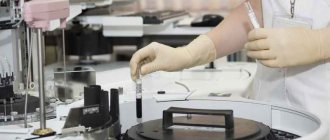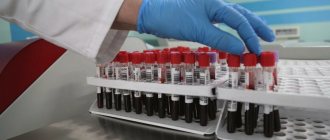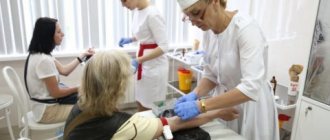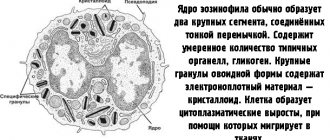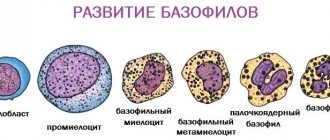Platelets are responsible for several processes in our body, but their main task is to organize stable blood clotting. In case of damage to blood vessels, platelets stick together, forming a clot, and replace the damaged area, restoring tissue.
One of the problems that can arise with them is low platelets.
If the level of blood cell coagulation falls, the number of platelets in the blood decreases, thereby increasing the possibility of bleeding and slow wound healing.
What processes do platelets perform in the body?
Originating primarily in the bone marrow, these blood platelets have a circular or oval shape, and never contain a nucleus. The diameter of platelets reaches from 2 to 4 microns.
Glycoprotein complexes are located directly on the membrane , as receptors, and assist platelets in activating, establishing a spherical shape and forming pseudopodia (outgrowths of unicellular organisms used by cells for movement).
The gluing of platelets and their attachment to damaged areas of blood vessels are all the tasks of such complexes. They are attached to fibrin, after which they release thrombostenin (an enzyme), resulting in tissue compaction.
The main function of platelets is blood clotting.
Stimulating these blood cells directly also produces benefits. Components involved in blood clotting, while at the same time other useful and active substances are released.
Platelets are distributed throughout all vessels and participate in the following actions:
- Formation of blood clots, the initial thrombus that will stop the bleeding by closing the damaged area,
- Nourishes blood vessels and also narrows them if necessary,
- Processes related to the immune system,
- They also take part in the dissolution of a blood clot, this process is called fibrinolysis,
The lifespan of platelets is from 8 to 10 days; towards the end of their existence, they decrease in size and lose their shape slightly.
Note! More than 75% of bloody discharge from the nose, prolonged menstruation, subcutaneous hemorrhages and gum blood flow are attributed to pathologies of the platelet formation system.
Role of platelets
The formed elements of blood, which look like small plates and are called “platelet”, originate in the red bone marrow from the plasma of its cells - megakaryocytes. Platelets do not have a nucleus, but there are many granules - their number can reach 200.
In a normal or deactivated state, these cells are round or oval in shape, and their size is directly determined by the degree of maturation (young, mature, adult) and averages 2–5 μm. However, when they come into contact with a surface that differs from the epithelium (the inner lining of the circulatory system) usual for platelets, its activation occurs.
A small cell grows about 10 processes (pseudopods), 5–10 times larger than itself. When these processes are used, platelets close vascular damage and thereby stop bleeding.
The granules of these cells also contain platelet factors - special substances required for the formation of special compounds B-lysine and lysocine. The latter are capable of destroying the shells of some microorganisms, preventing pathogenic bacteria from entering the human body.
Using long processes, platelets move quite quickly in the bloodstream. They can stick to foreign objects, capturing and digesting them, sticking together, forming a blood clot that blocks bleeding. These small plates not only actively participate in hemostasis processes, but also transport nutrients to the vascular membranes.
This is interesting! The life cycle of platelets is 10–12 days, after which new cells are formed to replace the dead ones. If the balance between production and destruction is disturbed for some reason, then the body develops a tendency to form blood clots or bleed.
Symptoms of Low Platelets
A situation in which the saturation of platelets in the blood is low is called thrombocytopenia.
Thrombocytopenia disease
If platelets are low, the following symptoms may occur:
- Bleeding from the nasal cavity,
- Prolonged menstruation, and in greater quantities,
- Bleeding gums
- Formation of red dots on the skin,
- Accelerated formation of bruises and hematomas, even with slight pressure on the tissue.
- Profuse and slowly stopping bleeding when soft tissue is damaged,
- Less common is an enlarged spleen.
Slow stops of external hemorrhage, with this pathology, occur because the concentration of platelets in the blood is low, and the process of gluing and replacing the damaged area takes much longer.
Prolonged thrombocytopenia contributes to severe pathologies, which, if not given attention, can result in death.
They are:
- Large tissue damage with severe hemorrhages. With low blood clotting, severe bleeding caused by large-scale injuries is almost impossible to stop, which can lead to large blood loss,
- Hemorrhages can also occur in soft tissues, contributing to a stroke, which can cause significant complications or end in failure.
Symptoms of thrombocytopenia
Regardless of what reasons led to a low platelet level, it is difficult for a person who has little understanding of medicine to understand that this particular abnormality is present in his body. Such a disorder is most often not accompanied by pronounced symptoms, which is why until a certain time many people do not pay any attention to it, which is why thrombocytopenia is dangerous.
The general condition of the patient with low platelets in most cases remains unchanged, and attention is often simply not paid to specific symptoms. However, the following manifestations of a low level of the described cells should not be ignored, such as:
- frequent or recurrent nosebleeds;
- rash on the body that looks like small dots;
- bleeding gums, the appearance of blood in stool or urine;
- heavy bleeding from minor injuries;
- in women, vaginal bleeding not associated with menstruation;
- tendency to causeless formation of small hematomas (bruises);
- difficulty stopping bleeding during medical procedures;
- long-term non-healing wounds on the surface of the skin or mucous membranes.
In women, low platelet levels are most often first of all manifested by heavy, long periods, but many of them perceive this deviation as a common occurrence. At this time, the content of these cells naturally decreases, which gradually leads to dysfunction of the circulatory organs, an increase in blood viscosity, which means a disruption in the functioning of almost all systems.
From all of the above, only one conclusion can be drawn - to understand that platelets are reduced is possible only with increased bleeding. Unfortunately, this often occurs with life-threatening bleeding, accompanied by significant blood loss, since people seek medical help only in extreme cases.
Existing types of thrombocytopenia
This pathology can be either congenital or develop over time. The majority of cases are acquired over time. And directly in a larger number of acquired ones, the factor of low platelets is reactions of an immune nature.
They are divided according to mechanisms into 4 groups:
- Autoimmune. Noticing platelet protein in the blood, the body secretes antibodies against it, considering it harmful; this disease is called autoimmune thrombocytopenia. Cancer, rubella, HIV, as well as autoimmune diseases and the use of certain drugs contribute to their development,
- Alloimmune. Appear as a result of platelet collapse, in the case of incompatible blood group, or during the production of antibodies,
- Transimmune. Antibodies in this scenario penetrate directly from the mother infected with autoimmune platelet disease to the child, transmitted through the placenta,
- Heteroimmune. The body produces antibodies due to the formation of a new antigen in the body, or infection of the red plate protein with viral diseases.
Prevention and prognosis
To prevent a person from having a problem with low platelets in the blood, it is necessary to strictly follow several simple rules. Prevention includes the following actions:
- rejection of bad habits;
- healthy and nutritious nutrition;
- constant strengthening of the immune system;
- taking medications only as prescribed by a specialist;
- rationalization of the daily routine;
- maintaining an active lifestyle;
- Regularly undergoing a full medical examination and general blood test.
The prognosis depends entirely on the etiological factor. In any situation where platelets are low, lack of treatment causes either negative consequences or complications of the underlying disease.
What is spontaneous thrombocytopenia?
A decrease in blood clotting occurs with hepatitis, chronic connective tissue damage, leukemia of the lymph nodes, and other pathologies.
At the moment when there is an absence of primary symptoms during the disease, or when they cannot be established, a diagnosis of thrombocytopenic purpura, also called independent thrombocytopenia, is made.
In old age, these pathologies in most cases occur in a chronic form, and in 5-7% of cases the disease ends in death, with open bleeding or hemorrhage in the brain.
FACT! Spontaneous thrombocytopenia in children in most cases occurs in an acute form, but in 80% of cases its outcome is recovery. If you notice symptoms, do not hesitate to contact a qualified physician.
Causes of Low Blood Platelet Levels
Finding out why platelets are falling, low platelets in the test results, this condition may indicate the following:
- Formation of platelets in small quantities, insufficient for the body,
- Their loss during chronic bleeding,
- Accumulation of platelets in the spleen,
There are also a number of diseases and factors that influence the reduction of blood clotting:
- Alcohol addiction,
- Colds,
- Mononucleosis,
- Hepatitis of various types,
- HIV and AIDS,
- Destruction of liver cells (cirrhosis),
- Using medications and herbs to thin the blood,
- Excessive consumption of liquefying foods
- When carrying a fetus,
- Sepsis,
- Leukemia,
- Tumors and metastases in the bone marrow,
- Herpetic infection,
- and others.
Etiology
The fact that platelets in the body are low is said when their concentration drops below normal. It must be taken into account that acceptable parameters may differ for children and adults. For example, for a newborn the norm is 100–420x10^9 units/l, for children from 1 to 10 years old - 180–320x10^9 units/l. For women, the acceptable platelet count is 150-380x10^9 units/l, and for men - 170-320x10^9 units/l.
Platelet norms
The etiological factors of the pathology will also be different. For example, in newborns, the main provocateurs for low platelet counts are the following:
- the birth of a baby ahead of schedule;
- autoimmune diseases, such as systemic lupus erythematosus;
- asphyxia at birth;
- anemia;
- Fanconi or Bernard-Soulier syndrome;
- any immunodeficiency conditions;
- incompatibility of the blood type of mother and child;
- congenital heart defects;
- hemangiomas;
- Wiskott-Aldrich disease;
- Almost all pathologies are of an infectious nature.
The most common sources of pathology in children over 1 year of age:
- damage to the upper respiratory tract;
- DIC syndrome;
- thyrotoxicosis and other diseases of the endocrine system;
- anemia;
- hemodialysis;
- viral hepatitis;
- radiation sickness;
- long-term chemotherapy;
- hepatomegaly or increase in liver size;
- irrational use of certain medications, in particular antibacterial substances, analgesics, antidepressants and cytostatics;
- insufficient intake of folic acid;
- acute or chronic allergic reactions;
- severe intoxication.
In men and women, low platelet levels develop due to the following conditions:
- anemia or leukemia;
- damage or neoplasms in the bone marrow;
- inadequate medication intake;
- chronic alcoholism;
- Werlhoff syndrome;
- heavy blood loss;
- previous surgical intervention;
- ingestion of heavy metal salts and other chemical and toxic substances into the body;
- infectious diseases;
- autoimmune or hereditary pathologies;
- hemodialysis;
- heart valve replacement;
- uremia developing with renal failure;
- splenomegaly - platelets are destroyed in the enlarged spleen;
- cirrhosis of the liver;
- portal hypertension.
For women, a low platelet count in the blood can be caused by several physiological reasons, for example, menstruation or pregnancy.
Features of low platelets during pregnancy
During pregnancy, expectant mothers, especially after the 6th month of pregnancy, experience low platelet counts.
Factors influencing their decrease in the blood may be the following:
- Insufficient intake of vitamin B12,
- Lack of folic acid,
- Infections,
- If the hormonal balance has changed, this can lead to a decrease in the life of the plates,
- The concentration of formed elements in the blood decreases due to an increase in the amount of blood circulation,
- Autoimmune diseases.
During pregnancy, the drop in blood clotting is insignificant and within normal limits. But if you notice symptoms of a more severe fall, you should immediately consult a doctor. Also, a strong fall is fraught with large loss of blood during childbirth, which can be fatal for the mother.
How to determine deviation
You can determine that platelets are low using tests to evaluate:
- bleeding time;
- PLT level.
With a low platelet count, blood clotting worsens, which is why small wounds can cause extensive blood loss.
Diagnosis for low PLT includes:
- repeat blood test;
- testing for the presence of antibodies in blood plasma;
- Ultrasound of the liver and spleen;
- genetic tests.
Symptoms
In adults, low platelet levels are manifested by symptoms:
- frequent nosebleeds;
- bleeding gums;
- causeless appearance of bruises;
- hemorrhagic skin rashes in the form of nodules filled with blood;
- slow healing of small cuts;
- the appearance of blood in the urine.
Analysis and decoding
The normal PLT for adults of both sexes is considered to be 180-320*109/l. In women during menstruation, the norm is 75-220, and during pregnancy, normal PLT values are 100-310*109/l.
If platelets are below normal, a state of thrombocytopenia develops. A decrease in platelet count to 160 *109/l does not adversely affect health.
Thrombocytopenia is a blood condition in which PLT is below 160*109/l. Depending on the decrease, there are 3 degrees of thrombocytopenia:
- First degree or moderate (PLT within 50-160*109/l).
- Second degree or sharply reduced level (PLT value in the range of 20-50*109/l).
- Third degree or marked decrease (the number of PLT cells is less than 20*109/l).
If the first blood test shows a drop in platelets, the doctor will order a repeat test to confirm the permanent rather than temporary nature of the disorder.
At low values, increased bleeding is observed in the form of pinpoint hemorrhages from small vessels and capillaries. Bleeding develops when the levels drop to 50*109/l. A level of blood platelets reduced to 10*109/l causes a condition that can lead to death.
Important information: Norm of leukocytes in the blood of women by age (table)
What foods to exclude to increase clotting?
Certain foods can affect blood thinning or thickening. If coagulation rates are low, it is necessary to remove or reduce the consumption of foods that are not allowed for thrombocytopenia.
They are as follows:
- Green tea,
- Blueberry,
- Fresh tomatoes,
- Pepper,
- Garlic,
- Ginger,
- Celery sak, raspberry juice,
- Sea fish,
- Yogurts and kefirs,
- Lean meat (turkey and chicken),
- Nuts,
- Sunflower seeds
- Olive oil,
- and others.
The following herbs also lead to low platelets:
- Fresh nettle,
- Yarrow,
- Burdock,
- Needles,
- Burnet,
- and others.
A certain list of medications also affects greater blood thinning, so you should stop using the following medications:
- Aspirin,
- Fenilin,
- Chime,
- ThromboAss,
- Cardiomagnyl,
- Ginko Biloba,
- Aspecard.
Folk remedies for reducing platelets
Folk remedies that are used both as medicine and in the form of food and drinks in the daily diet will help reduce the number of platelets in the blood.
To reduce platelets, traditional medicine recipes use ginkgo biloba, ginger, cinquefoil, mulberry roots, peony, celery, meadowsweet, chestnut, galega officinalis, ginseng, sweet clover, willow bark, birch buds, etc.
Recipe 1
Boil the grape juice so that only a third of the original volume remains in the bowl. You will need to drink 1 glass of this drink per day.
Recipe 2
- Place 50 g of ginkgo biloba leaves in a glass jar and add 0.5 liters of vodka;
- Infuse for 2 weeks;
- drink a teaspoon before meals for a month.
Recipe 3
- 50 g of mulberry horse is infused with 1 liter of cold water for an hour;
- bring to a boil and simmer over low heat for 15 minutes;
- drink one glass 3 times a day for 5 days;
- are treated with 2–3 courses, taking a break of 3 days between them.
Recipe 4
- Two heads of crushed garlic are infused with 200 ml of vodka for two weeks in the dark;
- drink a teaspoon before meals.
To reduce platelets, doctors recommend increasing the daily volume of fluid, but in pregnant women this can cause swelling. Chestnut flowers, which are used both as a tincture and as a juice as a folk remedy, can help lower platelets in a woman’s blood so that swelling does not occur.
Chestnut flower tincture
- Pour 50 g of flowers into 0.5 liters of vodka in a glass jar;
- leave for 3 weeks in the dark;
- drink the tincture 3 times a day before meals.
Chestnut flower juice
- Grind the flowers (you can grind them in a meat grinder), squeeze out the juice;
- drink 30 drops 3 times a day;
- Store in the refrigerator for no longer than 2 days.
What not to do if you have elevated platelets
Folk remedies, like any medicine, can have side effects. If you have a tendency to have high platelets in the blood, you cannot constantly use herbs such as valerian, knotweed, yarrow, St. John's wort, corn silk, and nettle.
If you are prone to high blood platelet counts, herbs with a diuretic effect should be used with caution, as they promote the removal of fluid, which causes the blood to thicken. Many herbs have a diuretic effect to a greater or lesser extent, and it is dangerous to use any herbal raw materials without the supervision of a doctor.
How to treat slow clotting?
There are no specific medications aimed at quantitatively increasing platelets. Treatment in this case depends more on the pathology that caused this state of platelets in the blood . For minor deviations from the norm, no specialized treatment is required; you just need to bring your diet back to normal.
To bring clotting rates back to normal, you should not only eliminate thinning foods, but also add foods that help thicken the blood to your diet.
Products
The following list of products will help in increasing clotting processes:
- Cheese and cottage cheese, which contain large amounts of calcium,
- Legumes (almonds, peanuts, hazelnuts) containing fatty acids,
- Iron-rich foods, such as meat, apples, buckwheat, etc.
- Rose hip,
- Carrot,
- Fish oil (omega-3),
- Spinach, parsley,
- Potato,
- Peas,
- Corn,
- Beef liver,
- and others.
Drugs
Immune system stimulation agents are also prescribed:
- Immunal,
- Echinacea tincture.
Folk remedies
There are also methods to reduce the increase in blood density with folk remedies, these include:
- currant leaves,
- Dog-rose fruit,
- thyme leaves,
- Coltsfoot,
All herbs are brewed as tea and taken orally. Doctors also recommend including sesame oil (10 g per day) in your diet; along with these remedies, you need to consume more onions and garlic.
Note! You can thicken the blood with a decoction of dried nettle leaves. It is very important that the leaves are dry, as fresh leaves help thin the blood.
If the patient’s condition is very serious, then in a clinical setting a transfusion of platelets and plasma is performed.
Important! If antibodies to platelets are detected, platelet transfusions should be abandoned, as there is a risk of increased bleeding.
If low platelets are caused by a disease, then a narrow spectrum of the disease is determined and the disease itself is referred for additional research (oncology, hepatitis, etc.). And after this, the drugs are coordinated with a qualified doctor in this field.
Consequences of low platelet count
In a state of low platelet count, disorders subsequently develop, which include frequent bleeding (menstrual and nosebleeds), while the bleeding time increases significantly and becomes difficult to stop. Sudden gum bleeding may develop (not everyone does). Blood clots may be found in urine or stool. Petechiae (red dots resulting from damage to the capillary wall) appear on the skin of the lower extremities, most often the legs. Even minimal damage leads to the formation of ecchymoses (bruises), when normally a bruise would not appear.
The severity of symptoms directly depends on the platelet count. The fewer platelets, the more severe the clinic. If the platelet count is very low, internal bleeding into the digestive tract or even bleeding into the brain may occur.
Even in the presence of a mild clinic, it is recommended to consult a general practitioner in order to prevent this condition.
Online consultation with infectious disease specialist, allergist-immunologist Natalia Nikolaevna Gordienko
consultation cost: 500 rubles
Online consultation
During the consultation, you will be able to voice your problem, the doctor will clarify the situation, interpret the tests, answer your questions and give the necessary recommendations.
